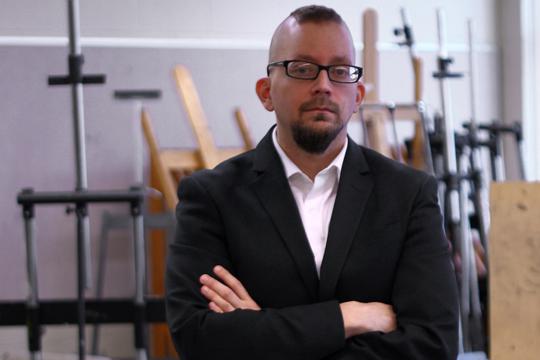Paul bridges departments
February 7, 2012
To many, drawing is a talent derived from the time spent enjoying a hobby. To others, drawing is nothing more than a useless idea. What does one member of Washburn University’s staff say about this question? According to John Paul, associate professor of sociology and art, art is a passion worth pursing always.
Paul, currently teaching both Sociology and Art, believes that his Drawing One course is a great way for beginning artists to delve deeper into their major.
“Its great to be in an environment where one can be inspired (in an almost instantaneously way) by the work of another and this in turn creates a cycle of development, stimulation and encouragement that grows throughout the semester,” said Paul.
Teaching two different courses can be difficult, but Paul has found that practice makes perfect.
“This is my third semester teaching Drawing One, and across these semesters, I’ve had the students work primarily in replication,” said Paul.
However, he insists that his students do abide by the copyright laws with their choice of images.
“This class has been experimenting with the foundational techniques and core concepts of drawing,” said Paul.
With the class being two times a week, Paul’s students are quickly moving into the semester. “Our first major assignment is approaching rapidly,” said Paul, “We’re doing a large-scale portraiture.”
“While this is helpful in learning drawing, I’ve found that it can quickly become repetitive for students who aren’t stretching their own creative imaginations by altering the image and producing their own works,” said Paul.
Therefore, during his second semester teaching Drawing One, Paul changed his teaching tactics. “I added more individualized projects that challenged students to come up with their own ideas, and they did not disappoint,” said Paul.
Now, according to Paul, the course is divided into equal parts of experimentation in drawing techniques, replication and personalized creative projects.
Currently this semester and in the future, Paul has a few new ideas he’s waiting to unveil. “Hopefully, there will be more experimentation and the continued production of creative work,” said Paul.
Paul’s real hope is for a combined course that he could teach, instead of the two he’s separately teaching now. “I do hope to revive a “sociology-of-art” course in the future as a way to “blend” my core department with my secondary one in art.”



